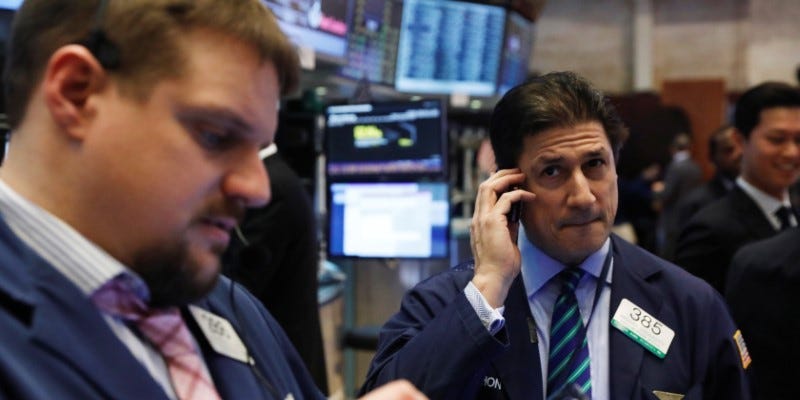US stocks end Thursday’s session lower and capped monthly losses for February. Yields climbed this month as inflation remains too hot for the Fed’s comfort. The S&P 500 has dropped about 5% from this year’s peak. Loading Something is loading.
Thanks for signing up!
Access your favorite topics in a personalized feed while you’re on the go.
Stocks ended Tuesday’s session and February with losses, as investors during the month scrambled to reassess how high the Federal Reserve will take interest rates as inflationary pressures remain a problem for policymakers.
The S&P 500 was dragged lower in the daily session as seven of its 11 sectors slumped, led by utilities. More earnings reports rolled out as well, and among them was Target. The retailer’s holiday-quarter sales came out ahead of Wall Street’s expectations, but the company signaled slowing sales.
The S&P 500 fell for the month alongside the Nasdaq Composite and the Dow Jones Industrial Average,
“The biggest change in February was a repricing of interest rates on the short-end and the long-end [of bonds] and basically put downward pressure on equity valuations,” Keith Lerner, co-chief investment officer at Truist Advisory Services, told Insider in an interview Tuesday.
The 2-year Treasury yield rushed beyond 4.8% for the first time since 2007 following upside surprises in January consumer and wholesale inflation data. Still-hot inflation, while below peak levels, has stoked speculation the Federal Reserve will jack up its benchmark interest rate to perhaps as high as 6%.
Here’s where US indexes stood at the 4:00 p.m. closing bell on Tuesday:
S&P 500: 3,970.14, down 0.30%Dow Jones Industrial Average: 32,656.70, down 0.71% (232.39 points)Nasdaq Composite: 11,455.54, down 0.10%The S&P 500 has dropped about 5% from its 2023 peak of 4,195 that was reached on February 2.
“Short-term, there’s a tug-of-war that’s going on where we are,” said Lerner, noting the S&P 500 has been chopping around its 200-day moving average of 3,940.
“We went from an overbought condition to a moderately oversold condition. I think there’s a standstill between the bulls and the bears after this pullback and that likely leads to further consolidation in the market, which is actually not a bad thing.”
Lerner said his shop is overweight fixed-income, cash, and in equities, the industrials sector on a planned pickup in federal infrastructure spending and prospects for defense outlays related to China and Europe.
Here’s what else is happening today:
Crypto exchange Binance reportedly used customer funds for its own purposes in a move similar to FTX. Billionaire investor Leon Cooperman predicted the S&P 500 will sink 22%.Visa and Mastercard are reportedly pausing new crypto partnerships in the wake of industry collapses.Stocks could retest October lows by midyear as a looming recession hits the US economy, Evercore’s Julian Emanuel said.Tesla and Elon Musk were reportedly sued by shareholders over Autopilot safety risks after a $38 billion drop in market value. Robinhood said it was subpoenaed by the SEC soon after FTX crashed.Elon Musk promised “very significant” Twitter stock awards for remaining employees after layoffs. Oil prices notched a fourth monthly loss on the prospect the Federal Reserve will keep hiking interest rates.In commodities, bonds, and crypto:
West Texas Intermediate crude tacked on 1.8% at $77.03 per barrel. Brent crude, the international benchmark, rose 1.7% to $83.77. Gold picked up 0.6% to $1,836.60 per ounce. The 10-year Treasury yield turned lower, slipping one basis point to 3.91%.Bitcoin fell 0.2% to $23,297.25.
